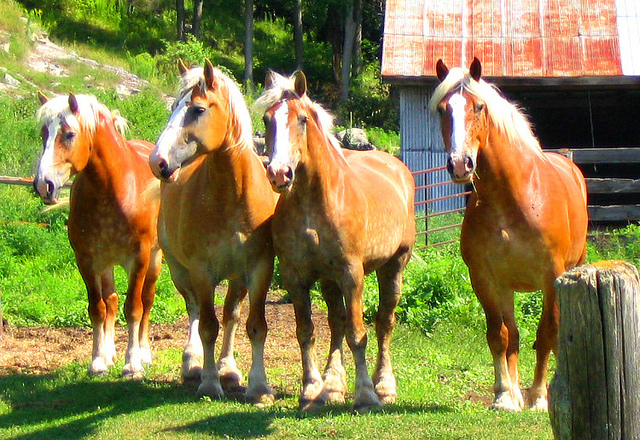Camping is also an important feature of Gatineau Park, and the camping experience covers everything from big, luxurious RVs to wilderness camping. Around Lac Philippe there is a family camping area with a variety of facilities while the area around Taylor Lake is more remote and provides a semi-wilderness experience. The La Pêche area is intended for canoe-camping and you literally have to use a canoe to get into this area. Harrington Lake is the location of a prime ministerial residence and as a result it is a high-security area that is not accessible to the public.
Following this general overview, Michel packed me into one of the fuel-conserving official Gatineau Park vehicles and off we went for a brief visit of the park. We went on the main road and Michel pointed out the turnoff to Meech Lake, site of the (in)famous Meech Lake Accord, a set of failed constitutional amendments to the Constitution of Canada negotiated in 1987, designed to persuade Quebec to accept the Canada Act. Indeed, Gatineau Park has an important place in the history of Canada.
Nowhere is this in evidence more than at the Mackenzie Estate, former prime minster Mackenzie King’s private estate. William Lyon Mackenzie King (1874 to 1950) was the tenth Prime Minister of Canada and governed during three different periods with intermissions of different lengths from late 1921 to late 1948. His combined time is the longest of any Prime Minister in the history of Canada and in 1999 Mackenzie King was ranked by historians as the greatest of Canada’s Prime Ministers.

Moorside, part of the Mackenzie King Estate, now the location of a tea room
In 1903 Mackenzie King bought land near Kingsmere Lake and built a modest cottage for himself. After he became prime minister, he moved to a larger residence where he laid out ornamental English gardens and ruins. His permanent residence was an old restored farmhouse, “The Farm”, which was his last residence and now serves as the official residence of the Speaker of the House of Commons. Upon his death in 1950, he bequeathed his property at Kingsmere to the people of Canada.
At the Mackenzie King Estate, Michel and I met Chantal Comeau who works for the National Capital Commission (NCC), the federal agency responsible for planning and building a capital of which all Canadians can be proud. The NCC also organizes national celebrations and events, including Canada Day and Winterlude.

Dorota and Chantal explain the science of tulips to me
The planting of the tulips for Ottawa’s world-famous Tulip Festival is also managed by the National Capital Commission, and each spring, more than one million tulips and 200,000 daffodils bloom in the NCC’s flowerbeds. Ottawa’s Tulip Festival has interesting historic roots: at the beginning of World War II, Princess Juliana of the Netherlands and her family found refuge in Canada, and five years later, Canadian troops liberated her native country. As a gesture of gratitude, the Dutch people sent 100,000 tulips bulbs to Canada, and another 20,000 were added by the Dutch royal family. This tradition continues and every year the Netherlands send 20,000 bulbs to Canada.
Chantal brought a tulip expert with her: Dorota, who is the head landscape architect handling the planting of tulips for Ottawa‘s Tulip Festival. Interestingly and quite humorously, Dorotha is called the “bulb lady” because she not only plans all the planting of the tulip bulbs for Ottawa, she also handles the design of the light bulbs for Ottawa’s Christmas Light festival.

One of the late-blooming specimens at the Mackenzie Estate
Kingsmere was just covered in late-blooming tulips and Dorotha gave me an overview of the over 50 different varieties of tulips that are used in Ottawa’s famous Tulip Festival. They vary in size, colour, shape and blooming time and once they are finished blooming, they are composted and replaced by annual flowers that adorn the NCC’s locations.
My brief exploration of Gatineau Park had come to an end since I had a television interview to prepare for, but it gave me a taste of this historic nature area that is so easily accessible to everyone in the National Capital Region and I thought to myself that next time I come here I have to bring my mountain bike (or my cross-country skis, depending the season).




